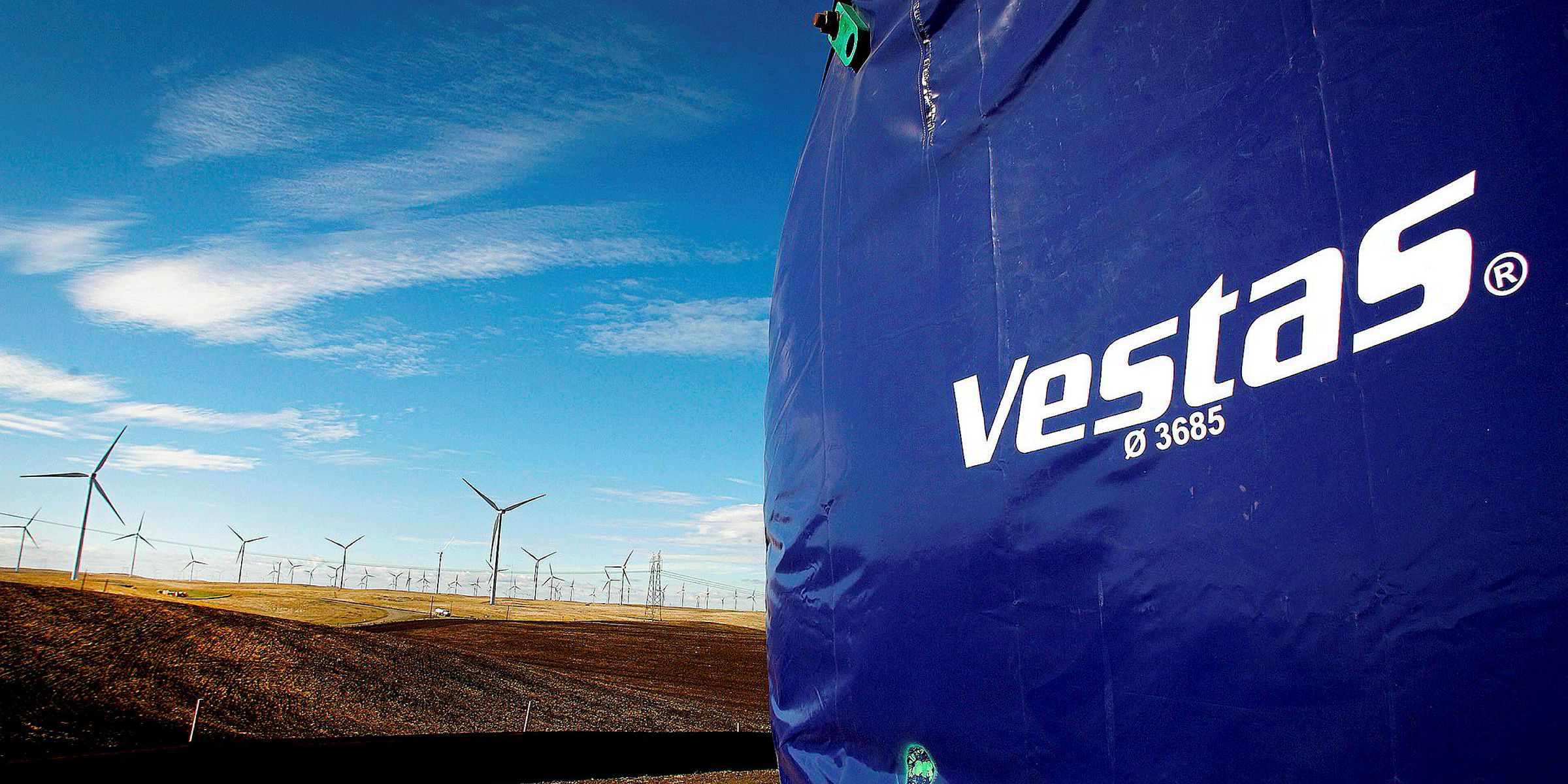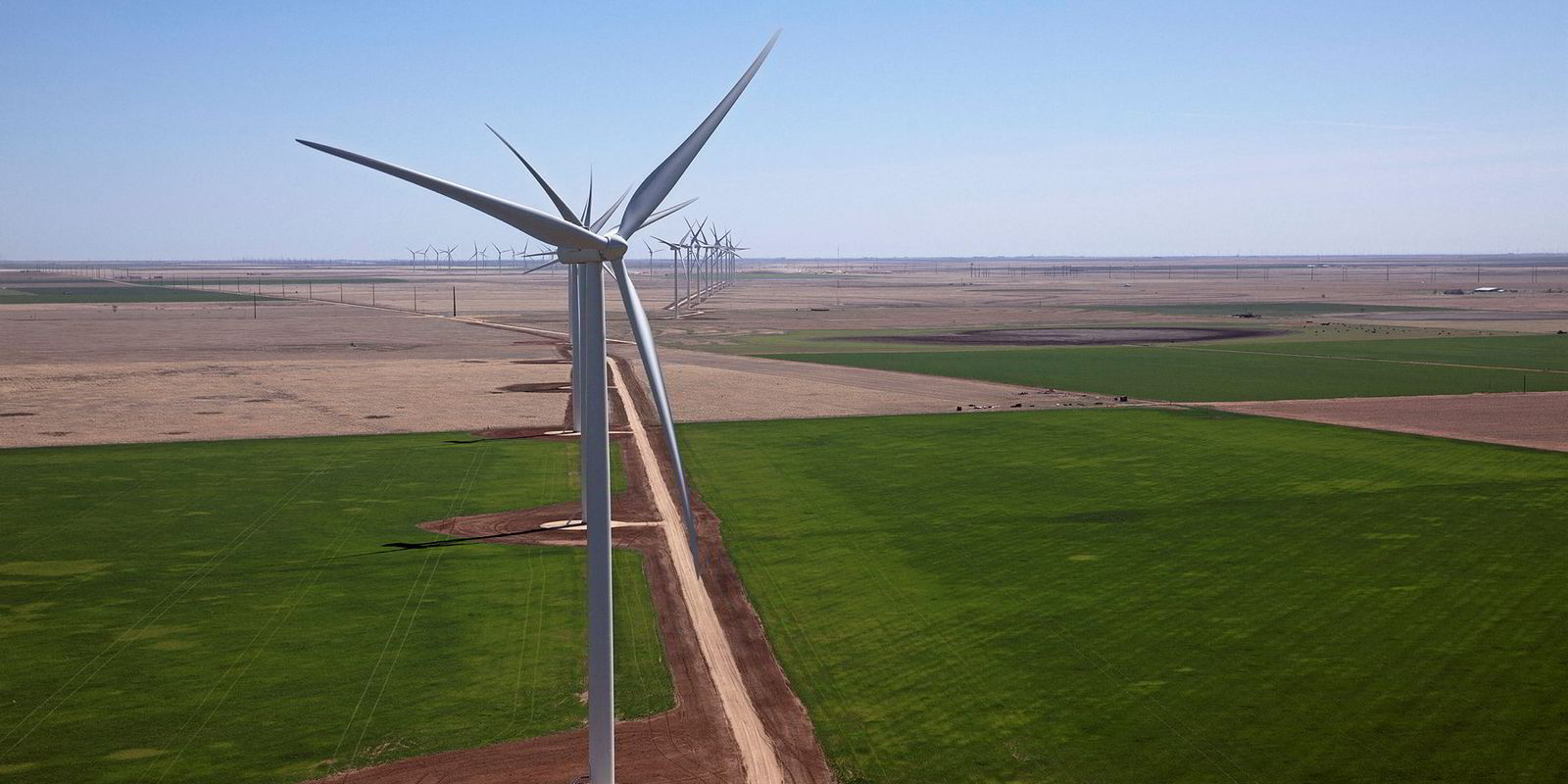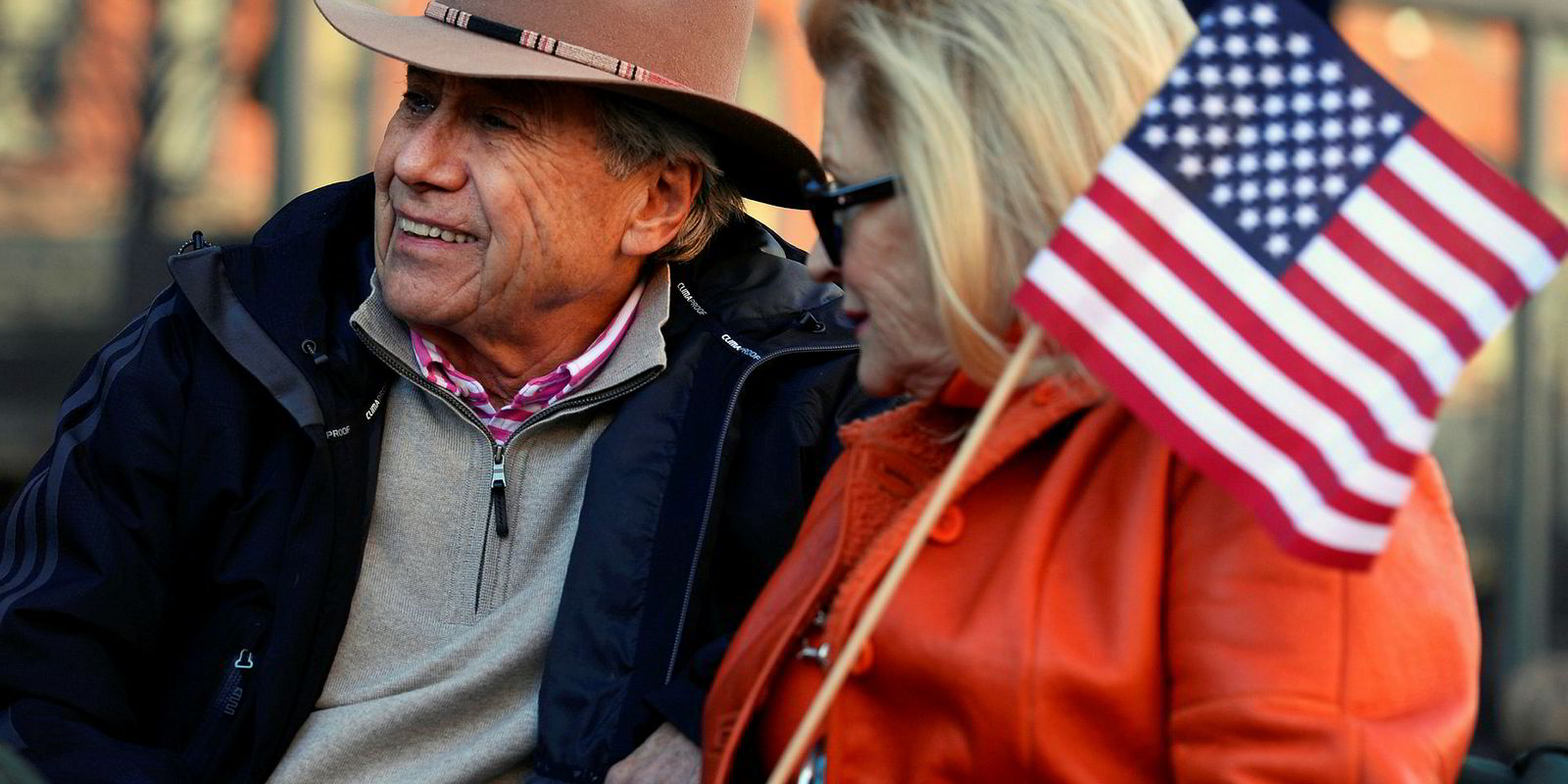No market has been more important to Vestas’ turnaround of recent years than the US, and no market is more central to the world’s largest turbine supplier’s immediate future.
In 2012, the worst year in the Danish wind giant’s history, when it swallowed a €963m ($1bn) loss, Vestas was a distant third in the US market, installing less than half as many turbines as rival GE. That same year Vestas named Chris Brown — formerly chief operating officer of the city of Detroit, and before that, briefly the chief executive of offshore developer Deepwater Wind — as president of its North American business.
Just four years later, Vestas ended GE’s decade-plus run atop the annual US wind installations leaderboard — a performance that helped propel the Danish OEM to a record 2016 profit of €965m and its stock price to an eight-year high. More than 40% of the 9.7GW of turbines Vestas made last year were delivered to the US — nearly as much as to Europe, the Middle East and Africa combined.
With its launch of two new 2MW onshore turbine models last month — the V116 and V120 — Vestas is looking to cement its newfound leadership of the US market. And with its relentless focus on driving down cost, it’s hoping to soothe a nervy US wind sector that finds itself in a world where the Clean Power Plan has been junked, the wind production tax credit (PTC) is fading to black, and the world’s most famous wind-turbine critic sits in the White House.
To what does Brown attribute Vestas’ recent US success?
“It’s customer intimacy,” he tells Recharge. “Our sales guys are out in the market, really trying to listen and respond to what customers are asking for.”
This flexibility, both on turbine deals and after-sale O&M packages, has helped Vestas seal big orders from large utilities such as MidAmerican Energy and Xcel Energy. “[And] I think there will be more to come,” adds Brown.
As impressive as 2016 was for Vestas in the US, the next few years could be even better.
The company notched a string of high-profile US wins last year, including the landmark multi-billion-dollar deal with Warren Buffett’s MidAmerican for its multi-site Wind XI project in Iowa, worth up to 2GW. Most industry observers expected that deal would go to Siemens, which has a factory in Iowa and had been MidAmerican’s long-time turbine supplier.
And in the final days of 2016, Vestas announced a storm of US orders totalling more than 1.5GW, as project developers raced to secure PTC-eligible turbines.
All told, Vestas ended last year with a market-leading 1.76GW under construction in the US, and its name attached to 3.33GW of projects in “advanced development” — more than quadruple the figure for number-two GE, according to the American Wind Energy Association.
Among the key orders up for grabs in 2017 is the first phase of Power Company of Wyoming’s Chokecherry and Sierra Madre project, expected to be worth at least 1.5GW — making it perhaps the largest single-site order in wind history. Vestas’ factories in neighbouring Colorado are advantageously located for supplying it.
“We’ve been supporting that project, and I think all the OEMs are looking at it,” Brown says. “We’ll compete.”
Barring an unexpected renegotiation of the PTC, the US wind market will remain strong over the next few years, with analysts expecting 8-10GW of annual installations between 2017 and 2020.
But it’s a critical period for turbine suppliers to lock down customer relationships and market share, since the 2020s look far more uncertain. Many variables — including the price of natural gas and solar panels, and the availability of transmission — are expected to impact the wind market.
Against this backdrop, Vestas has launched its V116, which it describes as a “perfect match” for the North American market. The V116 makes evolutionary progress on the company’s V110-2.0MW model, which has been a runaway success in the US since its 2013 launch.
“[The V110] really was the right turbine at the right time, and it drove us to the number-one position,” Jeffrey Fuchs, vice-president for strategy and marketing, tells Recharge at Vestas’ North American headquarters in a former warehouse in Portland’s trendy Pearl District. In the lobby downstairs, a large Lego Vestas turbine spins hypnotically, while a wall-spanning digital map depicts global wind movements in real time.
The V116 is designed for low- and medium-wind conditions, its longer blades sweeping an area 11% larger than the V110 while boosting annual energy production by up to 4%. Deliveries will start in Q1 2018. The V120 is designed for low- and ultra-low wind conditions.
Vestas sells roughly twice as many 3MW onshore turbines globally as it does 2MW models, but in the US, at least for now, the 2MW platform remains the leader. There are several reasons for that, Fuchs explains.
First, most wind turbines erected in the US need a special permit from the Federal Aviation Administration if they are taller than 500 feet (152 metres), giving an advantage to smaller 2MW models, especially in medium-wind conditions.
Second, the US is generally a “megawatt-constrained” wind market, meaning that the limiting factor for many projects is the amount of capacity that can be absorbed at the interconnection point. In comparison, more densely populated countries like Germany tend to be “pad-constrained”, meaning space — and, ultimately, the number of turbines — is more often the limiting factor for projects.
In a megawatt-constrained market, one of the most important things a turbine supplier can do for its customers is to boost projects’ capacity factor. “The V116 and V120 are going to have world-leading capacity factors,” Fuchs says.
Vestas notes, however, that it’s selling more 3MW turbines in the US these days.
While the V116 and V120 will make a good fit for almost any corner of the US, they could be especially helpful in creating opportunities for developers around the Great Lakes and Upper Midwest, Fuchs says. These areas have slightly lower wind speeds than the Great Plains, where much of the market’s activity has been focused in recent years.
“These machines are a really good fit for that region,” he says. “Having a bigger rotor and higher capacity factor is a real difference-maker there.”
The timing of the new turbines’ launch is important, given the way the PTC will “sunset” over the next few years. By investing 5% of a future wind farm’s total costs in 2016, developers were able to qualify projects for the full PTC — so long as the wind farm is completed by the end of 2020. Many developers “safe-harboured” future wind farms by buying turbines, albeit typically just a fraction of the total amount they’ll need to actually build the projects — leaving a good number of big orders still to play for over the next few years.
In Vestas’ case, many developers secured the PTC by ordering V110s, but they’ll be able to flesh out the balance of their projects with the more advanced V116 and V120 models, improving the economics. That’s hugely important, Brown says, in the brutally competitive US power market, where a difference of $1/MWh can make or break the economics of some projects.
Like the V110, the V116 and V120 will be manufactured at Vestas’ Colorado factories, and are expected to become the defaults for US customers in future years — after the company has worked through its backlog of V110 orders.
Vestas stresses the importance of the technical “continuity” between the V110 and V116-120 models, which it says will be an important selling point for turbine customers — as well as their financiers and insurers. Although the blades are slightly longer on the new models, their nameplate capacity stands still at 2MW and their nacelles will be nearly identical to the V110.
One of the most important trends to hit the global wind industry in recent years has been the wave of consolidation that has seen GE acquire Alstom; Siemens merge its wind business with Gamesa; and Nordex and Acciona Windpower brought under a single roof.
Although Vestas has made a few acquisitions in the O&M space, it has conspicuously remained on the sidelines amid this flurry of M&A.
Does Vestas view this industry consolidation — which has resulted in substantially larger competitors — as something to worry about? Or as a vindication of its market position? “I’d have to say the latter,” Brown says.
“Obviously we’ve had the same opportunities,” he says of the recent deals Vestas’ rivals have engaged in. But he points to Vestas’ ongoing success in the onshore wind market, and adds that “we’re also doing very well in offshore” as part of the MHI Vestas joint venture formed in 2014 with Japan’s Mitsubishi Heavy Industries.
“Something has to be pretty compelling for us to want to acquire it.” The truth is, says Brown: “I think the others are trying to play catch-up to where we are.” ![]()




